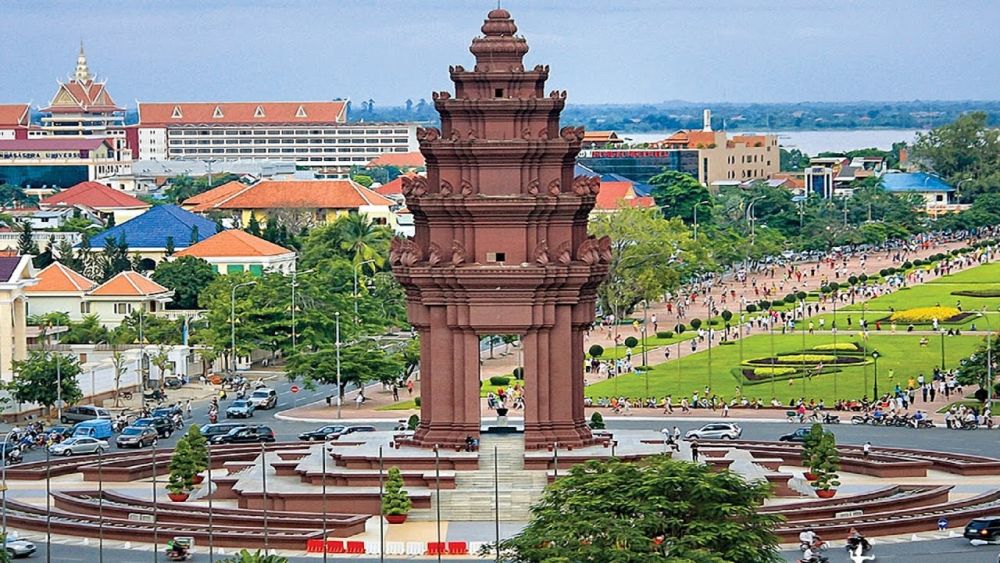

The Independence Monument in Phnom Penh, also known as the Vimean Ekareach, stands as an iconic symbol of Cambodia’s freedom from French colonial rule. It was inaugurated in 1958 to commemorate Cambodia's independence, which was achieved in 1953. Designed by the renowned Cambodian architect Vann Molyvann, the monument is an impressive lotus-shaped stupa and forms part of the city's heritage.
In the years following Cambodia's independence, the newly instated government encouraged national pride and cultural identity. The Independence Monument became a site of major national celebrations, such as Independence Day and Constitution Day. During the 1960s, as Cambodia opened its doors to the world, more travelers began to include Phnom Penh and the Independence Monument on their itineraries, drawn by the city’s French colonial charm mixed with traditional Khmer culture.
The dark period of the Khmer Rouge in the late 1970s deeply affected tourism across the country. However, with Cambodia's return to peace and the establishment of the Kingdom of Cambodia in the 1990s, a renewed focus was placed on tourism development.
With political stability established, the early 21st century witnessed a surge in tourism. Independence Monument became a focal point for visitors eager to learn about Cambodia’s struggle for sovereignty. The monument's central location at the intersection of Norodom Boulevard and Sihanouk Boulevard, near the Royal Palace and the riverfront, made it an ideal stop for tourists exploring the city.
In recent years, the Cambodian government and various stakeholders in the tourism industry have worked to enhance visitor experiences. Efforts have been made to improve infrastructure around key monuments, and Phnom Penh’s Independence Monument is no exception. Tourists can now enjoy the well-maintained park surrounding the monument and the spectacular fountain display that takes place in the evenings.
With the rise of digital and social media, many travelers now share their experiences online, further promoting interest in Cambodia’s historical sites. Independence Monument frequently features on travel blogs, Instagram feeds, and Pinterest boards, highlighting the enduring allure of this iconic structure.
Sustainable tourism practices are also becoming increasingly important. There is a growing emphasis on responsible travel which respects the culture and history of destinations like the Independence Monument. Visitors are encouraged to engage with local guides and support community-based tourism initiatives that celebrate and preserve Cambodia’s heritage.
As tourism continues to evolve, the significance of the Independence Monument as both a historical landmark and tourist attraction remains undiminished. Celebrations and official events held at the site draw both international tourists and Cambodian nationals who come together to honor the country's past while looking towards the future. Phnom Penh's Independence Monument stands not only as a testament to Cambodia’s historical struggles but as a beacon attracting visitors from around the globe eager to partake in the nation's rich cultural tapestry.